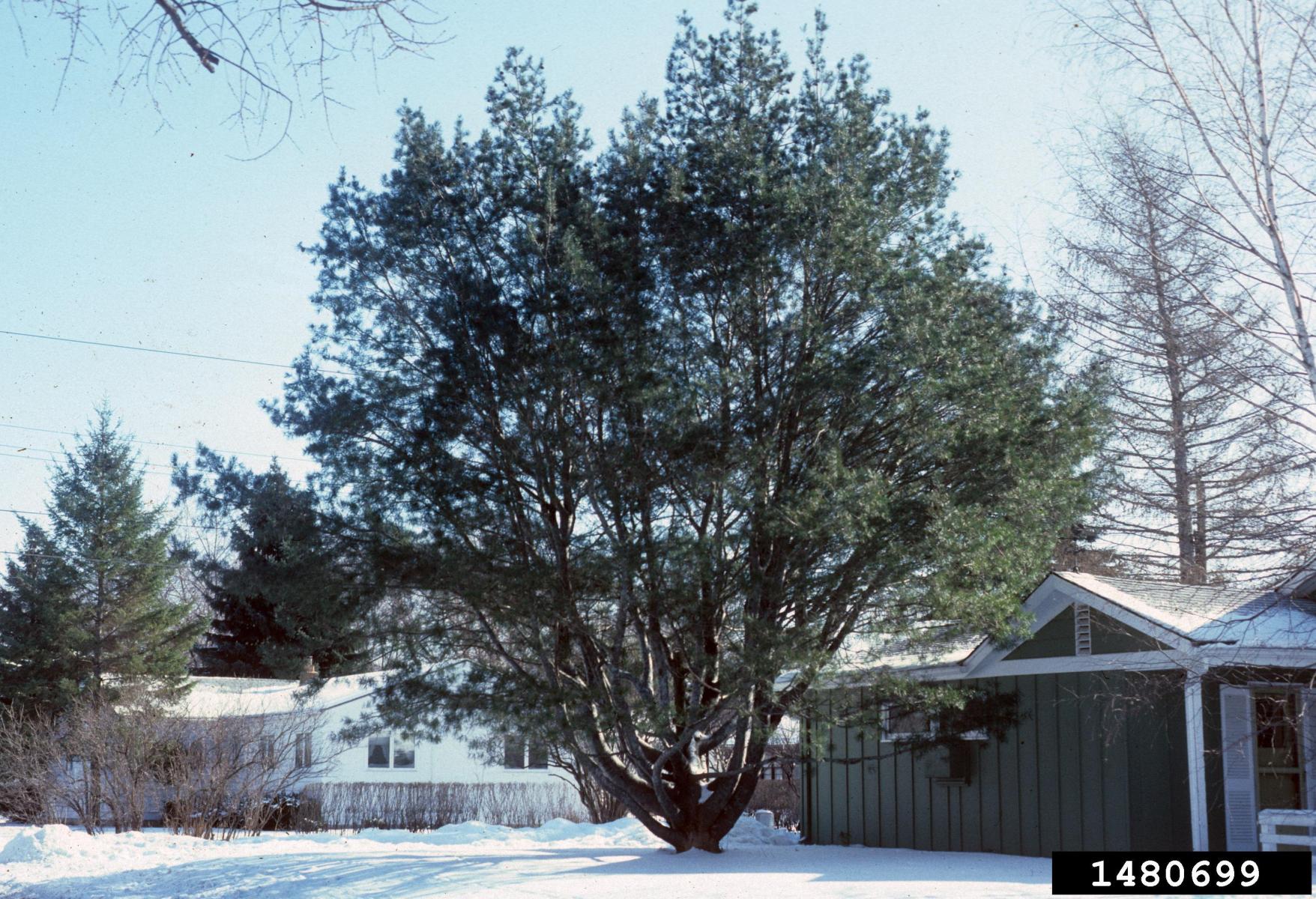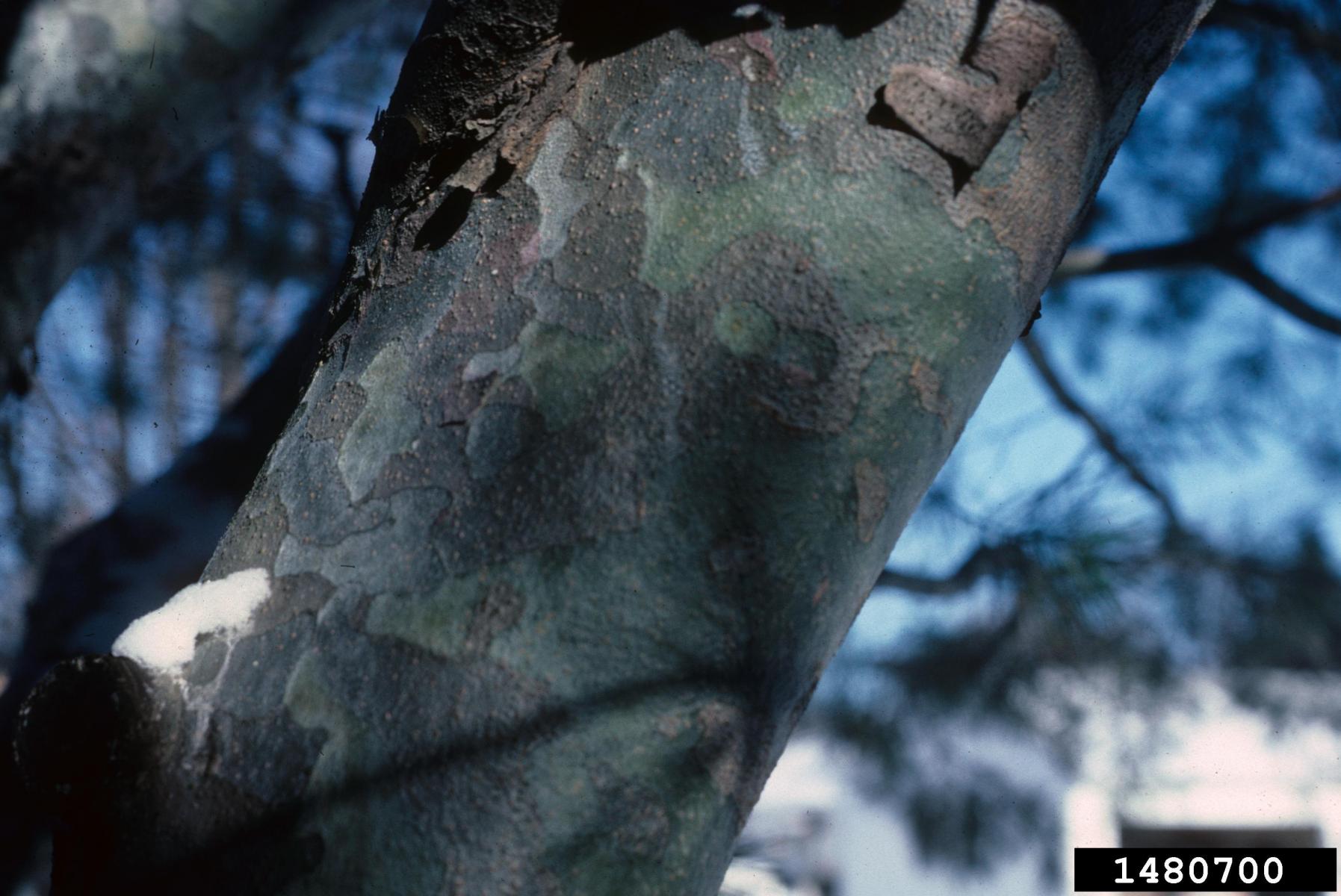February is a tough month for a gardener. We are close to spring, but not quite close enough to have a lot of plants actively growing. That is why we plant things in our environment to give us interest in our landscapes all year long. Evergreens do a great job of adding color to our boring winter environments.
One of my favorite evergreens is Lacebark Pine, Pinus bungeana. Lacebark pine grows up to 30-50 feet tall and 20-35 feet wide. The needles are 2-4 inches long and they are held in a bundle of three. The needles on Ponderosa pine are held in bundles of 2 or 3 and on Austrian pine they are held in bundles of 2. The cones on lacebark pine are small, yellow-brown, and 2 inches long. The most noteworthy characteristic of lacebark pine is the bark. This tree was named after its exfoliating bark that gains a camouflage appearance over time. Often, this tree is grown as a multi-stemmed tree that gives it a very open growth habit, but it can be grown as a single-stemmed tree as well.
Lacebark pine is best grown in well-drained soils in full sun. It can be grown in a windbreak or as a specimen tree in your landscape. It is a great choice for acreages because it is tolerant of deer damage. It is a slow growing tree, and will take many years before the interesting bark will appear, but it is worth the wait. Because this tree has such an open growth habit, it is prone to branches breaking in heavy snow loads. This can be remedied by loosely tying the branches up and together when a large snowstorm is predicted. Encircle the branches of the tree to prevent a heavy snow load from bending branches to where they will break. The idea is not to immobilize the branches, just help them withstand heavy snow loads.
Lacebark pines come from the orient and are often used on the grounds of Buddhist temples due to the unique bark. According to the University of Georgia, Lacebark pine contains delicious seeds, they are described as a “sweet, nutty delicacy”. Pinyon pine is the most commonly used tree for pine nuts, but lacebark pine also has delicious seeds that are large enough to be used for making pesto and snacking on like other pine nuts.
Lacebark pine is a great choice for Nebraska. It was the 2008 Conifer of the Year for the Great Plants for the Great Plains. The unique bark makes it a great addition to any landscape and because it is tolerant of deer damage, it is a great choice for an acreage. This plant would make a great landscaping plant or windbreak tree for landscaping in town or out. So the next time you go to plant an evergreen tree, choose lacebark pine, it will be interesting in your yard all year long.


